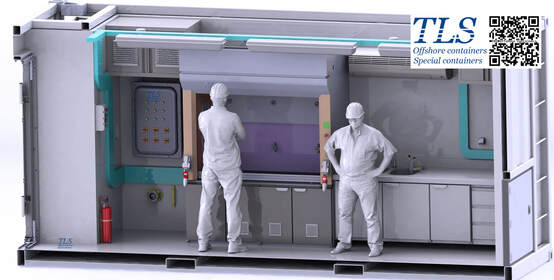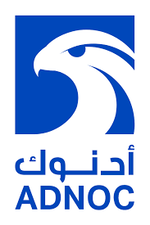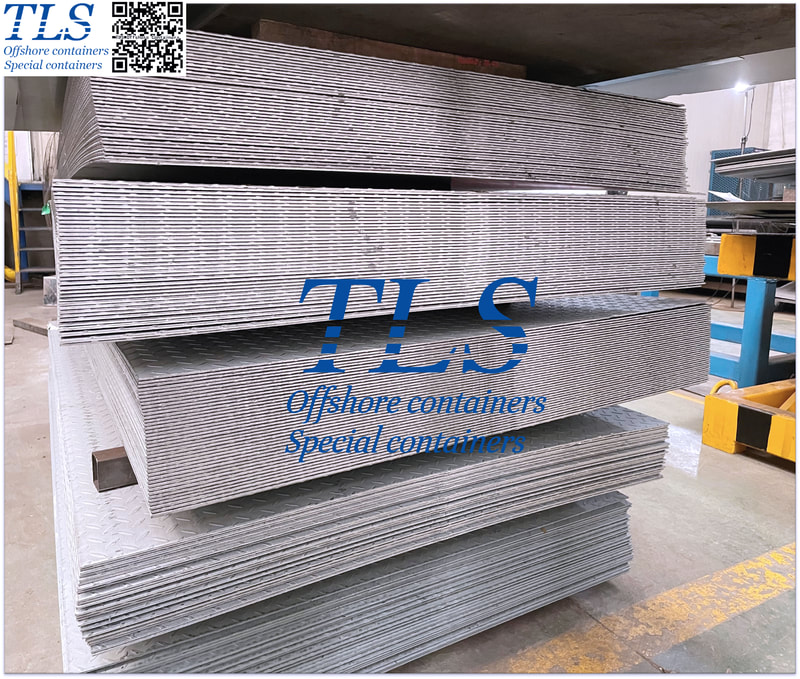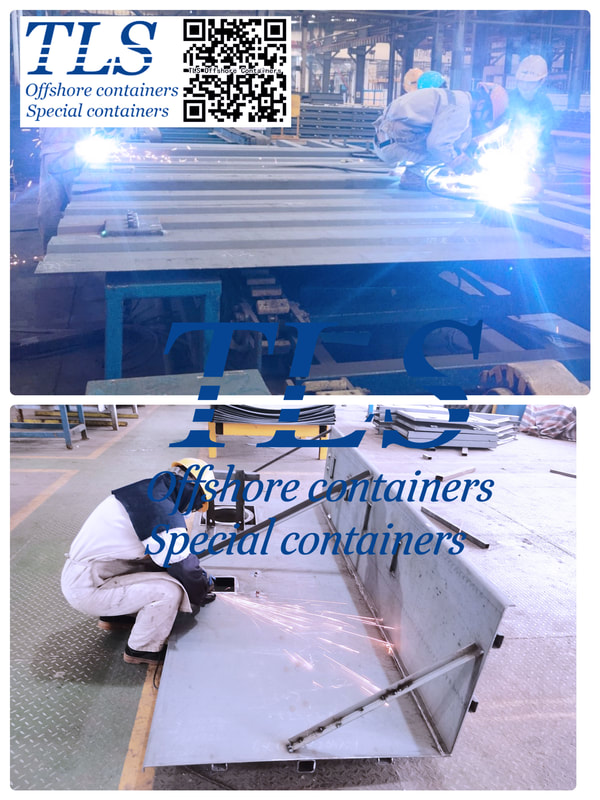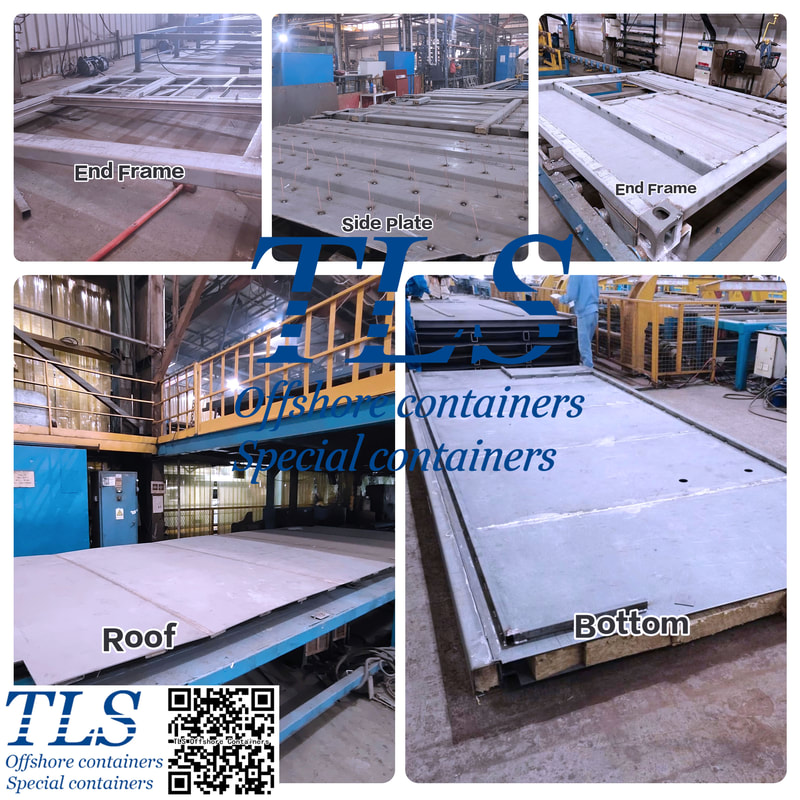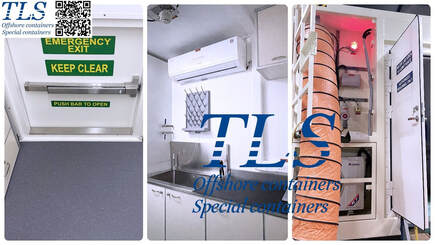|
About offshore negative pressure lab container certified by DNV2.7-1 The basic principle of the negative pressure system is to keep the pressure of the environment inside the container lower than that outside, so that the toxic gas or flammable gas in the container will not be directly discharged from the it, and the negative pressure system captures dangerous and infectious particles in the air, and it is removed with a blower and a set of filters. The negative pressurized container provide by TLS typically has 2 fans, a small fan for normal mode and a large fan for emergency mode. When either fan is turned on, a negative pressure environment is formed inside. When only the small fan in the fume hood is turned on, the internal pressure is around -30~40Pa, and normal ventilation mode in the container; When the flammable gas/H2S low level alarm is triggered, the outdoor Ex-fan will automatically turn on, the internal pressure is around -130Pa and the container enter the emergency mood and it will automatically turn off when the gas concentration is lower than the set value. If the gas concentration does not decrease, the high-level alarm of flammable gas/H2S would sound, after the alarm lasts for 10 seconds, the power supply of the container will be cut off. Negative pressure is a safe sealing solution which is widely used in lab containers, Mud Labs, etc. Please download laboratory container brochure for reference. The regular production cycle of 20ft offshore negative pressure containers is around 3 months after order is confirmed. Those lab containers are specially designed and manufactured for Abu Dhabi National Oil Company (ADNOC).
Container shell Production 1.Plate and Section Steel Pretreatment 2.Stamping 3.Welding Prefab 4.Bottom, End Frame, Top Side Production 5.Main Assemble 6. NDT for the welds (Certificate issued by a third-party inspection agency) 7. Painting (Ivory, C3 paint system, suitable for harsh offshore environment) 8. Structure Adjustment(Although the production drawings have been confirmed before the official production, we also fully support the changes proposed by the customer during the production process to avoid delivery delays and higher additional costs.) Container Interior Decoration 1.A60 Rock-wool Laying and Aluminum Film Tape Pasting 2. Stainless Steel Pipe Embedded for Waterway 3. Laying of Auxiliary Materials at The Bottom of The Container 4. PVC trunking/metal tie plate fixing, Cable laying, Hardware installations 5. Floor leather /Equipment and furniture/Door/ Air conditioner cover installation and circuit debugging 6. FAT (Final Analysis Test) including appearance inspection,insulation resistance test,function check Comments are closed.
|
Archives
July 2024
Categories
All
|
- Home
-
Containerised solutions
- Intelligent pressurised container | MUD logging cabin
- Battery energy storage system (BESS) container
- Flexible grid tied battery storage system
- Laboratory container | workshop container | Equipment containers
- Temporary refuge shelter | Toxic gas refuge | Safe haven
- Offshore accommodation cabin | office container
- Reefer container | Refrigerated container
- Intelligent waste water treatment container
- Fresh water generator container
- Cargo Containers
- Product photos & videos
- News & Blogs
- Contact us
|
Featured products
Intelligent pressurised container Temporary refuge (TR) shelter, toxic gas refuge (TGR) Battery energy storage system (BESS) container Containerised waste water treatment plant Fresh water generator container Reefer container Laboratory container, Workshop container Accommodation container Offshore closed container |
All Rights Reserved 2020 © TLS Offshore Containers / TLS Energy
|

